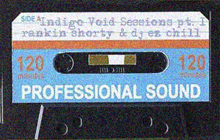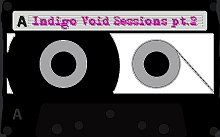
It’s impossible to have a complete or systematic overview of all different types of FM sounds, but you can have certain categories, for example based on certain types of ratio values (see episode 4).
A simple and intuitive way to navigate the fm sound waves is to have a small number of fixed envelopes and then experiment with changing values like RATIO while leaving the envelope settings alone.
This way you can get a good idea of what a certain combination (algorithm) of oscillators can do, or what a certain range of ratio values can do and at the same time the unpredictability of FM can't mess with your head!
For this type of exploration you’ll typically want 2 or 3 different envelopes that don’t overlap each other, but provide maximum contrast instead. For example: one envelope for an attack (D in the clip), one for a downward sustained movement (F in the clip) and one for an upward sustained movement (E in the clip).
This is really a very simple envelope setup but it has an amazing range of sonic variation in store if you start playing with the ratios. And of course you can always make it more complex later - if really needed - or maybe use an LFO or whatever..
Fixed frequency
The original Yamaha DX7 FM-synth has an option called fixed frequency which sets an oscillator to a certain frequency that doesn’t change, no matter what key you play on the keyboard. Depending on the frequency, this feature can be used in different ways.
At a very low frequency, say 3 Hz - 15 Hz, it can work just like an LFO, and you can use it for controlled vibrato-like effects, because the rate of the vibrato doesn’t change with the key that’s played.
At a higher frequency you can produce ‘aaaaah’ or ‘oooooh’ or ‘iiiiiiih’ type sounds using the effect of so-called formants. For these oldskool vocal sounds you need a good table of formant frequencies.
Fixed frequencies can also be used for attack sounds that don’t change a lot depending on the key played. This is good for many kinds of attacks, including imitations of ‘real’ instruments.
For SOME STRANGE REASON most new FM synths no longer have the fixed frequency mode. That’s really a SHAME, because it’s also useful for drums and percussion sounds...
The FM Heaven synth is quite unique. Not only does it have fixed frequencies but it even has ratio controls and keyboard input of frequency values. This makes it easy to type in formant frequencies. Extra bonus: it has some really nice waveforms. On the negative side the visualization of the envelopes isn’t great.
Fixed frequencies are a relatively simple 'mode' compared to the variable (tracking) mode and this also makes it easier to experiment with a matrix if you’re new to that type of user interface. If you're feeling lucky you can try to create sounds that have 5 or 6 oscillators.
With fixed frequencies it’s relatively easy to come up with multi-layered percussive sounds that have an organic quality. The key is to have variation in the envelope types, and a wide range of frequencies. For extremer sounds use a few weird pitch envelopes.
















